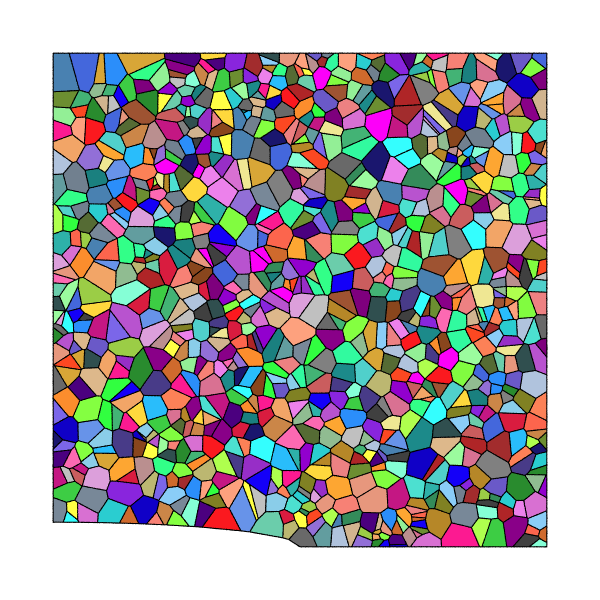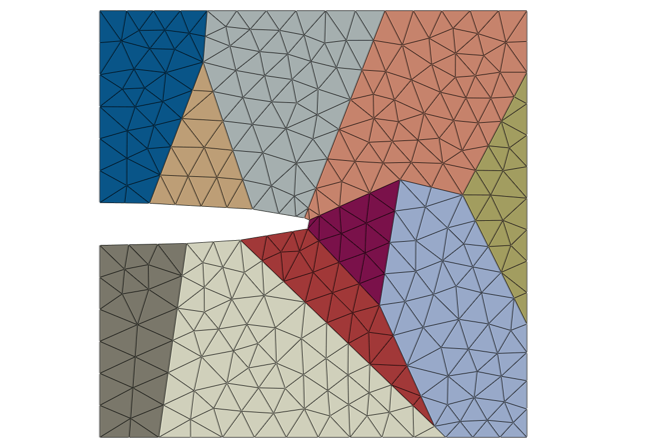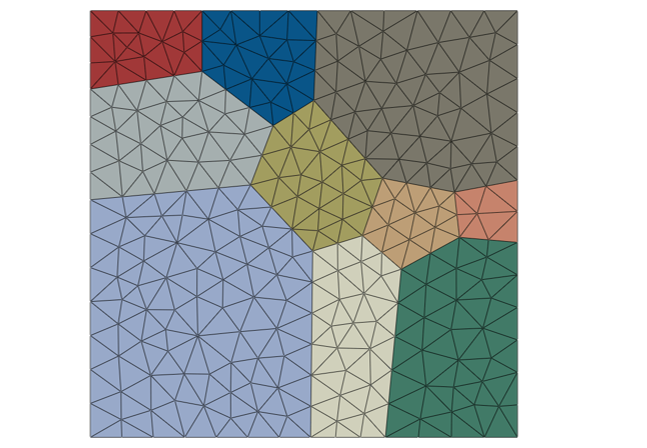-
|
Hello @rquey , The following command works fine (I suppose it uses 'Voronoi' tessellation as default): However, when I add -morpho 'gg' and -domain (see example below) I do not get the crack. I only get the square. Can I get my crack deformation using the graingrowth tessellation and specifying my domain or does the -transform command works only with Voronoi and the default domain? I appreciate your help and thank you for this platform. |
Beta Was this translation helpful? Give feedback.
Replies: 2 comments 5 replies
-
|
It does not come from the use of The problem comes from the fact that your domain is much bigger in the 2nd case. The ecylinder is therefore very small with respect to the grain size, which is not well supported by the current implementation. Do you really want a crack that small in such a large domain? |
Beta Was this translation helpful? Give feedback.
-
|
Hello, @rquey ! Just a side note on this example; below are 2 same exact examples one with Voronoi grains and one with 'gg'. They do not give the same results ( I am just double-checking with you as you have mentioned that the issue was not from using 'gg'. I am a little confused here, any clarification would be appreciated. Thank you. • neper -T -n 10 -id 1 -dim 2 -oridescriptor euler-bunge -transform "cut(ecylinder(0,50,0,0,0,1,1,0,0,0,1,0,50,5))" -domain 'square(100,100)' • neper -T -n 10 -id 1 -dim 2 -oridescriptor euler-bunge -transform "cut(ecylinder(0,50,0,0,0,1,1,0,0,0,1,0,50,5))" -domain 'square(100,100)' -morpho 'gg' |
Beta Was this translation helpful? Give feedback.



It does not come from the use of
graingrowth. It would give the same results with a standard Voronoi tessellation.The problem comes from the fact that your domain is much bigger in the 2nd case. The ecylinder is therefore very small with respect to the grain size, which is not well supported by the current implementation. Do you really want a crack that small in such a large domain?